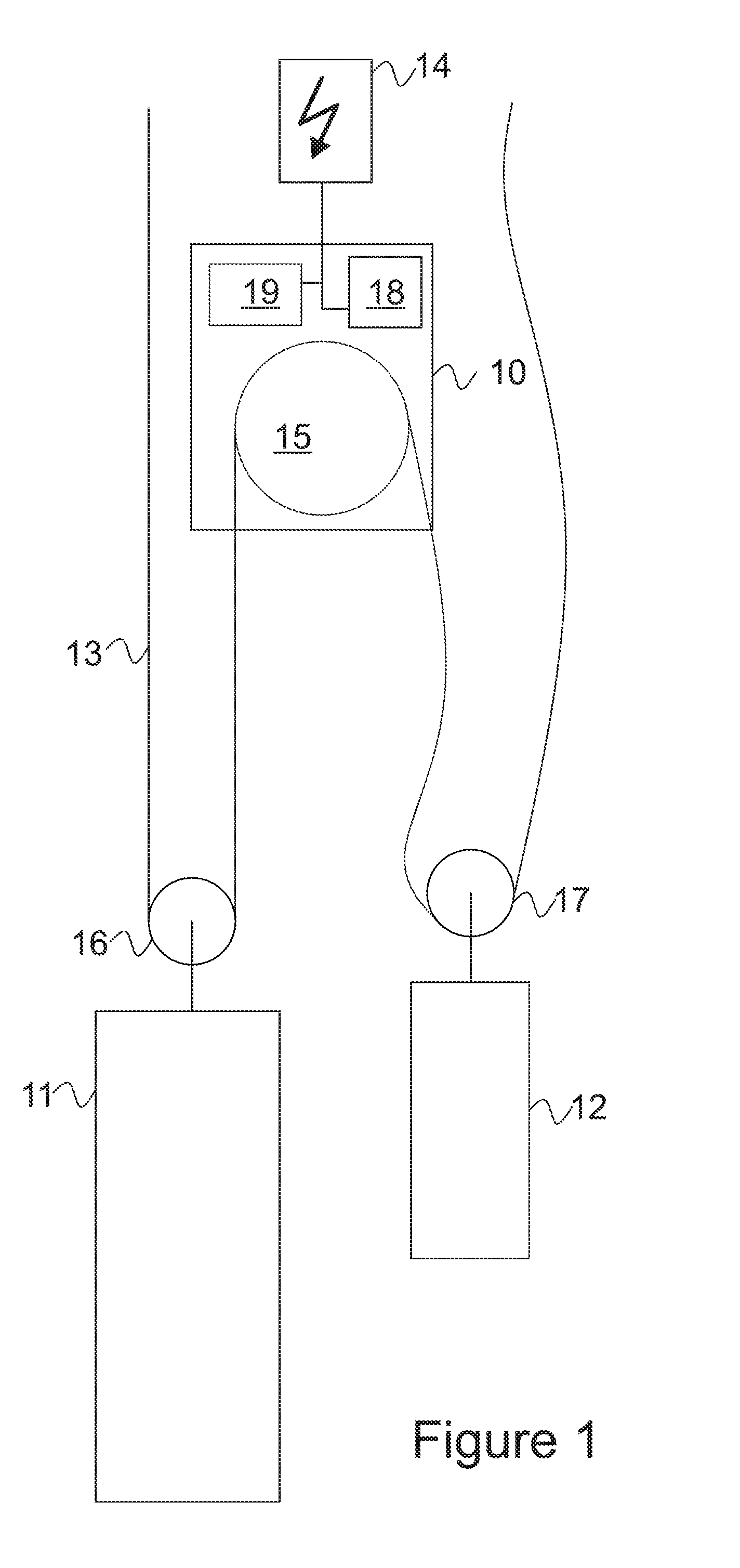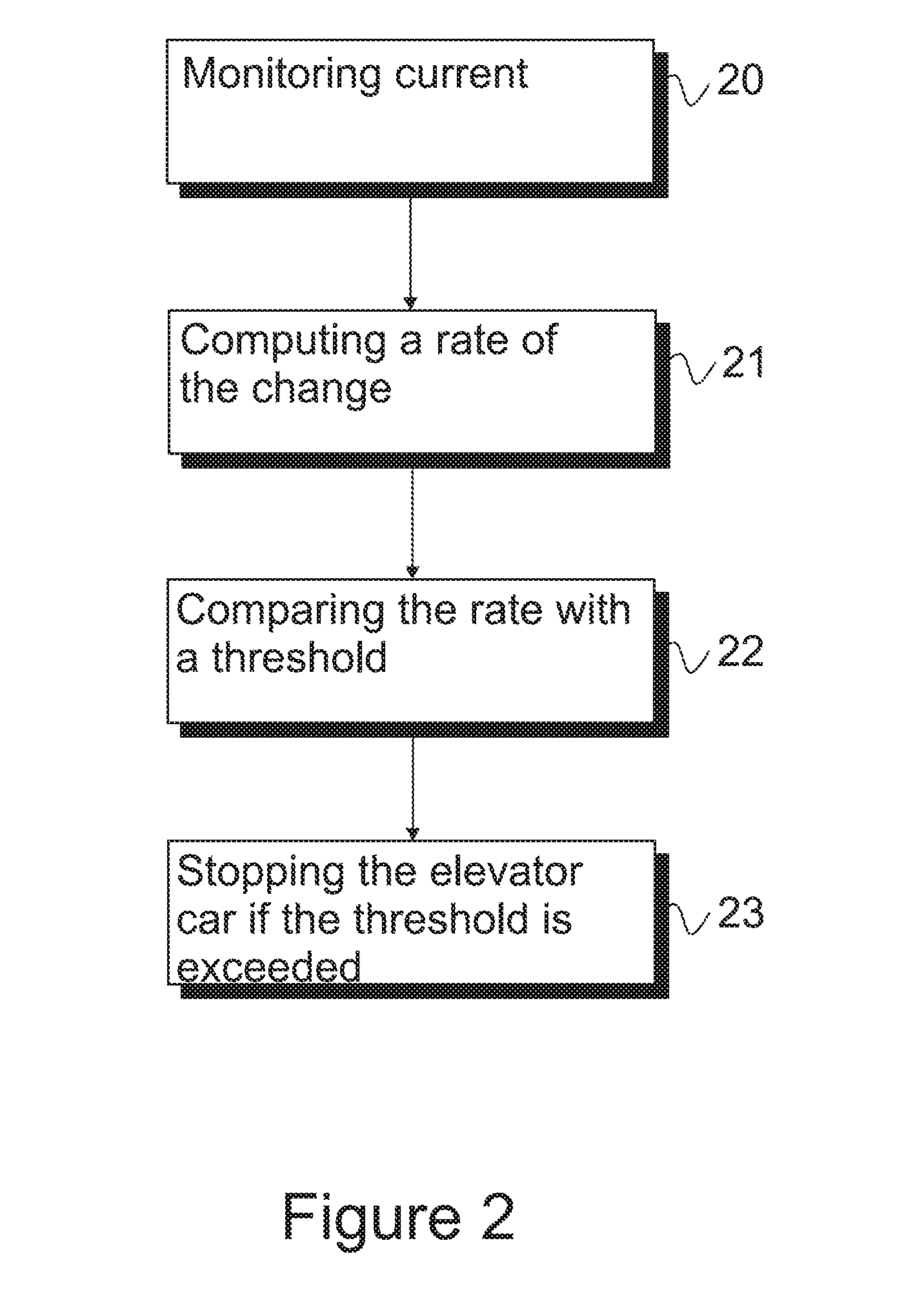Stall condition detection
a technology of stall condition and detection method, which is applied in the field of elevators, can solve the problems of inconvenience or even security risk, slack rope between the traction sheave, and limit the overall design of the elevator system, so as to improve the passenger safety, facilitate and cost-effectively implement, and achieve the effect of more freedom
- Summary
- Abstract
- Description
- Claims
- Application Information
AI Technical Summary
Benefits of technology
Problems solved by technology
Method used
Image
Examples
Embodiment Construction
[0020]Reference will now be made in detail to the embodiments of the present invention, examples of which are illustrated in the accompanying drawings.
[0021]In FIG. 1 a block diagram of an example embodiment according to the present invention is disclosed. In the embodiment a hoisting machine 10 is configured to operate an elevator comprising an elevator car 11 and a counterweight 12. The elevator car 11 and the counterweight 12 are coupled with a rope 13 that is arranged to be operated by the hoisting machine 10. The ropes are coupled to the elevator car 11 and the counterweight 12 by diverting pulleys 16, 17. The ends of the rope 13 are coupled to the elevator shaft so that the elevator can be operated. For example, the ropes may be coupled to support structures of the hoisting machine so that the traction sheave 15 can be operated by a hoisting machine. A person skilled in the art understands that there are also other configurations for the elevator ropings.
[0022]In FIG. 1 the ho...
PUM
 Login to View More
Login to View More Abstract
Description
Claims
Application Information
 Login to View More
Login to View More - R&D
- Intellectual Property
- Life Sciences
- Materials
- Tech Scout
- Unparalleled Data Quality
- Higher Quality Content
- 60% Fewer Hallucinations
Browse by: Latest US Patents, China's latest patents, Technical Efficacy Thesaurus, Application Domain, Technology Topic, Popular Technical Reports.
© 2025 PatSnap. All rights reserved.Legal|Privacy policy|Modern Slavery Act Transparency Statement|Sitemap|About US| Contact US: help@patsnap.com



